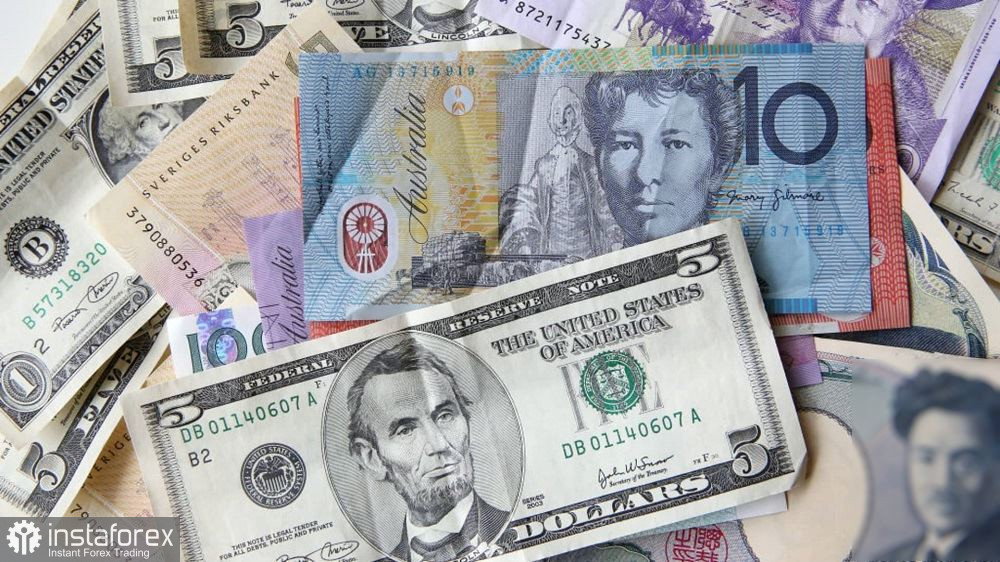
As mentioned earlier, the immediate reason for today's drop was the Chinese data. It was reported that China's trade balance surplus in July was 575.5 billion yuan, below the forecast of 625.25 billion yuan (compared to 491.25 billion yuan in the previous month). The surplus increased due to a sharp decline in both imports and exports. Imports decreased by 6.9% (compared to -2.6% in the previous month), with most experts predicting a decline of 2.5%. Exports in July declined by 9.2%, also falling short of the forecast (-8.9), following an 8.3% decrease in June.
In response to this release, the AUD/USD pair sharply declined, losing all the gains of the past few days. In early August, bulls attempted a corrective growth, with deep retracements, but the price managed to climb to 0.6612. At the time of writing the article, the pair returned to 0.6500.
The descending of the AUD/USD pair is undoubtedly caused not only by the weakening of the Australian dollar but also by the strengthening of the US currency. The US dollar index has returned to the area of 102, offsetting yesterday's losses. Dollar bulls reacted positively to the rhetoric of Federal Reserve Board member Michelle Bowman who has a vote in the Committee. In her yesterday's statement, she reiterated that the Fed would need further steps to raise the rate to control inflation. She said the recent inflation data were positive, but the central bank needed clear evidence that inflation was consistently decreasing toward the 2% target.
Similar rhetoric was previously voiced by other representatives of the Federal Reserve, urging their colleagues to maintain a hawkish stance, even despite red figures posted by the July inflation reports. In particular, San Francisco Fed President Mary Daly warned that it was too early to declare victory over inflation. Another Fed representative, Christopher Waller, also spoke in favor of further rate hikes, pointing to the stability of the labor market and strong overall indicators of the US economy. Following Daly, he also reiterated that it was too early to declare victory over inflation, reminding of the events of last year when inflation initially slowed down but then picked up again.
Yesterday, Bowman's statement reminded us that the fate of the Fed's interest rate is in the hands of inflation. If key inflation indicators resume their rise, the likelihood of a Fed rate hike in September (or November) will also increase. Consequently, the US dollar may strengthen its position.
Such prospects seem quite realistic, considering that the overall consumer price index is showing an uptrend for the first time in the past 12 months, rising to 3.3% compared to 3.0% in June. The core index is expected to slightly decrease to 4.7% from 4.8%. If both indicators enter the green zone, the US dollar index will surge, impacting all dollar pairs.
In Australia, the June consumer price index reached 5.4%, a yearly low. In the second quarter, CPI slowed down to 0.8%. It was forecasted to decline to 1.0% after a 1.4% increase in the first quarter, showing the weakest growth rate since 2021. These results increased the likelihood that the Reserve Bank of Australia may maintain its wait-and-see stance next month, just as it did in August.
If US inflation favors the greenback, the expected correlation of actions between the RBA and the Fed will act as an anchor for the AUD/USD pair.
From a technical perspective, the pair is within a southern trend, confirmed by the Ichimoku indicator, which formed a bearish "Line Parade" signal on the daily chart. A similar situation is observed on the H4 time frame. Moreover, the price on the higher time frames is positioned between the middle and lower lines of the Bollinger Bands indicator, which is within an expanded channel. The support level, the nearest target of the downtrend, is the lower line of the Bollinger Bands on the daily chart, corresponding to 0.6500. The main price barrier is located at 0.6450, which is also the lower Bollinger Bands line on the weekly chart. In this price range, it would be appropriate to lock in profits and take a wait-and-see position.





















